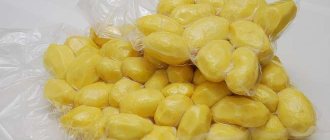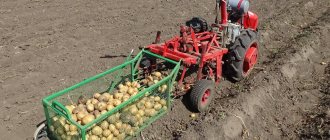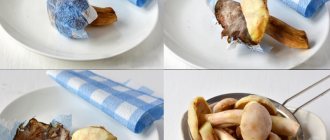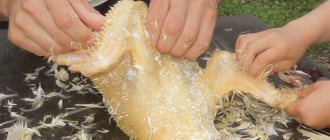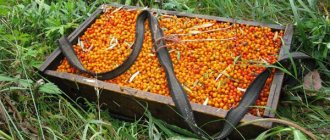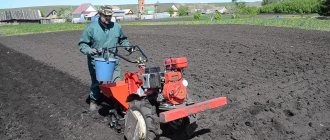Walk-behind tractor for weeding potatoes
Growing potatoes consists of planting, hilling and weeding. Weed control is an important stage, because on prepared soil, pests grow much more intensively and take nutrients from crops. Weeding potatoes with a walk-behind tractor allows you to quickly and effectively rid your garden of weeds.
Walk-behind tractor for weeding potatoes
The need for weeding
Typically, potato plantings occupy most of the site. Therefore, gardeners spend a lot of time and effort cultivating this crop. Nowadays, mechanized methods of growing potatoes are being increasingly introduced. For example, special devices are used to quickly weed potatoes. But even in such conditions, not everyone realizes the need to destroy weeds.
The following facts speak in favor of weeding potato plantings:
- The abundant growth of weeds does not allow the potatoes to fully develop. The cleanliness of the garden is especially important at the initial stage of bush growth. Otherwise, weeds suppress the development of the cultivated plant, preventing the vegetable from receiving nutrients and moisture.
- Weeds with a creeping root system and well-developed green mass quickly absorb humus and nutrients. Therefore, the potatoes do not have time to develop.
- Weeds are home to many insect pests. Even in the fall they lay eggs in the grass. With the onset of spring, their larvae hatch and actively destroy young potato bushes.
- With rapid growth, weeds fill the entire area of the site. As a result, due to their density, potato bushes cannot receive the required amount of light and air.
Typically, potatoes need to be watered several times during the summer. The need for the procedure remains until the bushes become strong. Then well-developed plants will be able to independently suppress the weeds growing under them.
Using a walk-behind tractor
A motor cultivator is a universal equipment used to perform agricultural operations. A popular brand among farmers is Neva.
The technique is used for:
- weeding potato rows with a walk-behind tractor;
- plowing the soil;
- planting crops;
- hilling bushes;
- harvesting.
If necessary, the walk-behind tractor is used to combat grass thickets on the site. The unit can be easily upgraded to suit household needs by adding special parts.
Weed control paws
A motorized cultivator for weeding potatoes is equipped with the following paws:
Paw weeding is the most common method due to its simplicity of design and efficiency. Installation of paws does not require special knowledge and skills. When stored, they do not take up much space.
The paws gently act on the soil during processing, without touching the root system of the potatoes. When choosing the depth of treatment, they are guided by the type of soil. For loose soil, a depth of 3-5 cm is suitable.
Dense soil requires deeper processing, but not too much. The optimal value is 6-8 cm. With deeper cultivation, the movement of the cultivator becomes difficult.
The paws are attached to the unit with special holders. The width depends on the size of the furrow. The devices are placed with the sharp part towards the center of the row spacing. To prevent the cultivator from getting stuck in the ground, 1-2 paws are placed slightly behind the rest.
The disadvantage of this method is the incomplete destruction of weeds: their roots remain in the soil.
What to weed with?
At the moment, there are various devices for weeding vegetables. It could be:
- hoe;
- hoe;
- flat cutter;
- cultivator.
Modern man does not want to waste time and comes up with newer devices for the shelf. These include a walk-behind tractor. Makes work several times easier. This will be especially noted by the person who planted root crops under a shovel.
Walk-behind tractor
A special device designed for soil cultivation. Weeding potatoes with a walk-behind tractor is carried out using paws or a weeder. The most commonly used are paws. They are fixed on holders, adjusted to the size of the row spacing.
They should overlap each other slightly. When attaching the paws, you need to place them so that one is in front of the other. This placement prevents cut plants from clogging the tool. Experienced specialists know how to make them at home.
Paws are a special device for weeding. They can be one-sided, two-sided or lancet. Depending on the installation, it processes the row on one or both sides. With the help of a walk-behind tractor, it is easy to weed potatoes, since the device has high productivity.
As a rule, walk-behind tractors are used on farms.
Cultivator
Growing potatoes is a labor-intensive process that requires effort and time. Weeding potatoes is one of the important stages of growing. To facilitate the process of removing weeds, use a cultivator. The device can be manual, electric, or equipped with a gasoline engine.
You can also remove parasitic plants from the garden bed manually. This is a real godsend for older gardeners who suffer from arthrosis. For weeding potatoes, you buy the tool in the store or make it yourself. A cultivator removes plants along with their root system.
The technique of use is as follows. The tool is screwed completely into the soil, the entire length of the teeth should go into the ground. Then, in one motion, they lift it up along with the pulled out weed. Most suitable for processing row spacing.
Types of attachments for cultivators
To cultivate beds, cultivators equipped with a pair of knives are most often used. They are located at an angle of 45 degrees to each other. They do not miss a single plant or device, which, instead of knives, is equipped with small pitchforks with teeth. To make it easier to operate such a weapon, wheels are installed on them.
The farmer pushes it, pressing down on the soil. Thus, labor productivity increases.
Weeding potatoes with hedgehogs is a convenient way to get rid of parasitic plants and at the same time hill up the garden bed. Hedgehogs for weeding potatoes are a structure made of two cones. Both cones have 3 wheels, the material of which is metal. All differ in size, as they have different diameters to make work easier.
Sharp spikes are welded onto metal wheels. Before work, potato weeding hedgehogs are placed on the cultivator frame. As the wheel rotates, the spikes pull out weeds and hill up the beds. The use of hedgehogs in this case increases labor productivity.
This device was also improved by providing it with a motor. After this, using the motor cultivator became even more convenient. It makes it easier to process the crop. Using a motor allows the mini-device to make work in the garden easier.
Using a flat cutter
Weeding potatoes with a walk-behind tractor with a flat cutter installed removes pests from the top layer of soil. The tool is classified as a mounted tool and is also used for planting potatoes and hilling. There are 2 types of devices: with simple knives and weeding drums.
Using a flat cutter, cut so that the wheels are in the furrow when moving. At this time, the sharp part cuts off the weeds. If a special drum is additionally installed, it tilts them to the sides.
The disadvantage is incomplete destruction of pests. Also, flat cutters do not cope well with old plants that have a strong root system. They are best used when the weeds are young.
Installing a harrow
Harrow weeds between rows
The device is a hinged structure that is used when processing row spacing. The harrow belongs to the dragging type of units.
The mesh structure consists of a frame and teeth placed on it, which catch weeds and pull them out of the soil with their roots.
Harrow sections are made in the following form:
- square;
- rectangle;
- hexagon;
- triangle.
The length of each cell is 15-15 cm. It is most effective to place the teeth in a checkerboard pattern for a larger treatment area. The harrow loosens the soil and weeds the rows.
Methods of planting potatoes
There are two planting methods. They differ in the tools they use:
- Hiller with regulator
- Mounted potato planter.
Both options are equally popular among summer residents. It’s just that the first option is used for a small area, and the second for a large area. But the first option is also cheaper. Good for those who like to save money. So, let's look at each of them.
Walk-behind tractor with hiller
Its design consists of the following elements:
- Conveyor is a conveyor that supplies seed.
- Furrower - lays furrows.
- Distributor - with its help, tubers are planted in a strictly specified period of time.
- Hiller - loosens the soil and covers the crop with soil.
This tool works on the following principle. Before you start working, the unit needs to be configured: metal wheels and a special hopper are installed on the tool. Wheels create furrows. They should be even, then the growing process will be simplified.
Potatoes are placed in the hopper, which will fall into the holes when moving. After this, the wheels are replaced from lug wheels to rubber ones and adjusted to the track width. This will prevent damage to the root crop.
Next, the hiller covers the potatoes with soil, compacting it at the same time. Apart from manually adding tubers to the hopper, the entire planting process occurs automatically.
Weeder
A simple device that gardeners often make themselves. It is used for weeding and hilling potato rows. The weeder pulls out weeds by the roots, which prevents the plant from reappearing.
The device consists of a metal frame on the base of which knives are fixed. At the rear there is a cylindrical drum, the blades of which are made in the form of plates. Its purpose is to throw the pulled weeds aside.
When the walk-behind tractor moves, the knives penetrate deep into the soil to the roots and catch the plants. The rotating drum catches them with its blades and throws them away.
Weeders are made with L-shaped cutting tools without a front frame. A solid wall is installed at the ends of the drums.
Working with a walk-behind tractor
A walk-behind tractor is a universal tool, so its presence in a large farm is simply irreplaceable. With the help of a walk-behind tractor, a person can perform a wide range of jobs. Owning a walk-behind tractor solves many problems that owners of rural estates and private houses have to solve every day. Such high functionality is provided by numerous attachments and accessories for the walk-behind tractor.
Using the device, the user can:
- plow the ground
- Hill up the soil
- Planting a root crop
- Harvest
In addition, the owner of the walk-behind tractor can mow the grass. This is just a small list of all the features that are provided to owners of multifunctional devices.
Weeding with a walk-behind tractor.
Weeding potatoes with a walk-behind tractor between the rows is carried out using special paws or a rotating cutter. The cutter is rotated by the power take-off shaft. However, specialized paws are the most popular. Their advantage is ease of installation and accuracy in tillage. The paws loosen the soil to a depth of about four centimeters, but if the ground is trampled or flooded, the depth can be increased to seven centimeters.
When working, it is necessary to secure the paws in special fastenings. The width between them should correspond to the width of the furrow, and the attachment should have a small overlap covering the two paws. Such holders, when one paw is in front of the other, are necessary so that the distance between the paws is not clogged with cut weeds. Tools can be either pointed (that is, double-sided) or single-sided. In the latter case, the paws are attached in such a way that their blades point toward the middle of the row.
Paws that have blades on only one side can be attached in another way, which allows you to process one row of furrows on both sides at once.
There is also another device for weeding - the so-called weeder. This device is a frame with a knife attached to it and a drum attached. Before weeding the potatoes, the wheels are placed in the furrows (which are located next door). Next, the installed knife cuts down the weeds, and the rotating drum picks up the plants and throws them back. There is a weeder that is equipped with several L-shaped knives that are attached directly to the ends of the drums.
Weeding potatoes with a walk-behind tractor is absolutely the same in principle as weeding other root crops. Cabbage, beets and carrots can be weeded with the same tool.
In order for the fight against unwanted vegetation to be more successful, weeds must be weeded not when they are already strong and mature, but when they are just beginning to appear.
Hedgehogs for weeding
Inter-row cultivation is carried out with a special ripper, which is called a hedgehog. The device is made in the form of several metal rings with different radii. They are located at a short distance from each other, forming together something like a cone.
Each segment has sharp thorns that are designed to pull out weeds. To increase efficiency, the design is made in pairs, but asymmetrical. The parts are placed at an angle to each other.
- Weeding. The thorns catch the plants and pull them out of the ground along with the roots, without touching the crop.
- Loosening and fluffing up the soil. The process improves the penetration of air and moisture into the soil.
- Formation of rows. The planting structure looks neat.
Hedgehogs are used both for weeding potatoes and for hilling. They are suitable for all types of soil and plot areas.
The device works on the principle of a rotary harrow. The spikes penetrate the soil, and the rings rotate, thereby pulling out the plant and loosening the soil.
Making your own hedgehogs
To make a hedgehog yourself, choose a metal disk structure as a basis. Find 3 disks of different sizes. Rings are more effective because they weigh less and are less damaging to the soil, but discs are easier to make.
For a paired design, take circles with the following diameter:
- 250 mm, 170 mm, 90 mm;
- 280 mm, 190 mm, 100 mm.
The frame is a thick inch pipe. The axial size of the hedgehog is 25 mm. The distance between the outer circles should not exceed 160 mm. The maximum disc diameter is 340 mm.
Weeding potatoes with a walk-behind tractor
Many have already appreciated the benefits of working with a motor cultivator. This is a universal technique that has become simply indispensable for farming. With its help, you can perform a huge amount of work on your site. The walk-behind tractor quickly and efficiently prepares the soil and copes with other tasks. For example, many gardeners weed potatoes with a walk-behind tractor. They can also hill up bushes very conveniently and quickly. There are a huge number of attachments and devices for this. In this article we will see how to weed potatoes with a walk-behind tractor.
Advantages of working with a walk-behind tractor
Gardeners have long adapted to walk-behind tractors and perform almost all procedures when growing potatoes with them. For example, a walk-behind tractor copes well with the following tasks:
- soil plowing;
- planting potatoes;
- weeding;
- hilling potato bushes;
- harvesting.
And these are only those works that directly relate to potatoes. In addition, owners of motorized cultivators can use them to mow grass and perform other manipulations. Next, in the article we will look at special devices for weeding potatoes.
Potato weeding paws
Most often, weeding potatoes is carried out using special paws. This is one of the simplest, but very effective devices. They are easy to install and store. The paws carefully cultivate the soil without disturbing the root system of vegetable crops. The main thing in this matter is to set the depth correctly. For looser soil, a depth of about 4 cm is suitable, and for trampled and dense soil, you will need to set the device 7 cm deep.
The width between the paws is set depending on the width of the furrow. In this case, one paw should be located slightly behind. Thanks to this, the space between the paws will not become clogged. There are several types of paws:
Weeding with a walk-behind tractor using a flat-cut weeder
The next device is no less popular. A flat cutter is a special attachment for cultivating soil and removing weeds from the top layer of soil. With its help, you can prepare the area for planting or simply process the row spacing. There are flat cutters with special drums for discarding weeds and simple ones with ordinary knives.
When weeding potatoes with a walk-behind tractor, the wheels must be in the furrows. As the motorized cultivator moves, the knives gradually cut off all the weeds from the rows, and the drum throws them back. It is also very important to consider the age of the weeds. While they are not yet deeply rooted and strong, it will be much easier to remove them. But mature and strong plants will not succumb to every adaptation.
Hedgehogs for weeding potatoes
A hedgehog is a special attachment that consists of rings of different sizes. They are placed in a cone shape. The rings have spikes or teeth that plow the ground. Hedgehogs should be installed on a motor cultivator with a slight slope. It is very convenient when the device is made of rings. Sometimes you can find homemade hedgehogs made from steel disks. In this case, the soil along with the weeds accumulates between them, while the holes in the rings allow the waste to fall to the ground.
Hedgehogs are essentially a smaller version of larger power harrows. These devices work on the same principle. The hedgehogs sink slightly into the soil and turn, thereby loosening the soil and removing weeds from it.
Wire harrow for weeding
A large number of gardeners claim that the best way to weed potato rows with a walk-behind tractor is to use a special mounted structure. It consists of a frame and a mesh with sharp teeth. This type of harrow can be called a drag harrow. Each cell in the grid is about 20 cm long. The most common cells are rectangular, hexagonal and square. The mesh harrow perfectly weeds out weeds between rows and slightly loosens the top layer of soil.
Conclusion
Now you know exactly how you can use a motor cultivator to weed potatoes. This universal device allows you to perform a large amount of work on your site. With its help you can weed and hill up potatoes, as well as other vegetable crops. Such processing of the area takes little time and saves energy. Anyone who once tried to use a motor cultivator will no longer want to return to a regular hoe. In the video below you can see how potatoes are weeded using a walk-behind tractor with hedgehogs.
CULTIVATING THE LAND WITH A MOTOR-BLOCK
Before planting potatoes with a walk-behind tractor, the soil must be cultivated so that it is loose and soft. Previously, it was dug up with a shovel, which took a lot of time and effort. Now, having attached cutters to the equipment instead of wheels, we cultivate it quickly and efficiently. We use a Neva-MB2 walk-behind tractor, a reliable and unpretentious piece of equipment that has been serving us well for several years.
Now we cultivate the area along the beds. The cutters leave small depressions in the soil. In order for the garden to be processed efficiently, when driving in the opposite direction, you need to use one cutter to follow the trail left by the other cutter. Then the land will be cultivated to the depth of a spade, which is optimal for planting potatoes.
Tips for working with a walk-behind tractor - inter-row cultivation, hilling, digging up potatoes
Inter-row processing
As for inter-row cultivation, which is carried out throughout the season, there are some features.
First of all, it is necessary to change the psychology of the gardener. You need to forget about small separate plots on which potato bushes are planted, and between them, for example, beets, and pumpkins at the edges, etc. and so on.
The entire garden should be rows of vegetables, running parallel along the long side of the garden.
If the area where the garden is located is hilly, then it is advisable to place the rows along the direction of ascents and descents.
At the beginning and at the end of the rows, it is necessary to provide free stripes so that the cultivator can leave one row and enter the adjacent one (see Fig. 2) .
Determining row spacing
The row spacing (the distance between the axes of two adjacent rows a ) must be determined based on the cutting width A and the width of the maximum growth of the plant root system B (see Fig. 3) : a = A + B
Dimension A is a characteristic of a motor cultivator.
For example, for the ARTANIA MA 400 motor cultivator this size is (if working with protective discs):
- when installing six cutters – 87 cm
- when installing four cutters – 61 cm
- when installing two cutters – 35 cm
Size B depends on the crop planted in the row.
For example, for potatoes it can reach 30 cm, for carrots - no more than 6 cm, etc. Accordingly, the row spacing can be a, b, c, etc. (see Fig. 2). It should be of such a size that as the bushes grow, it is possible to process row spacing, gradually reducing the number of installed cutters.
If, for example, when planting potatoes you ensure a row spacing of 70 cm, you will be able to freely carry out all inter-row cultivation during the summer, including the final hilling of “mature” potato bushes.
Hilling
Hilling is an operation similar to conventional inter-row cultivation.
This operation is carried out using a hiller and row crop wheels installed instead of cutters. If there are weeds between the rows, you should install cutters rather than row-crop wheels. During the last hilling of completely “mature” potato bushes, you should first, by installing two cutters, remove the weed and loosen the rows, and then, having installed the row crop wheels and hiller, hill up the bushes with a second pass.
Digging up potatoes
Digging up potatoes is the most difficult operation.
The motor cultivator is mounted on large metal wheels and no longer moves along the row, but above the row of potatoes. You should dig up the odd rows first, then remove the potatoes, and only then proceed to the even rows. You should know that for high-quality digging of potatoes, it is necessary to install the potato digger in the socket of a universal hitch, which allows you to change the angle of its attack. Without such a hitch, it is impossible (or very difficult) to dig up potatoes.
When digging up potatoes, those starting to work with a motor cultivator have a question: at what depth should the potato digger be set?
It is not easy to give a definite answer. We can only give some recommendations. The rest is your experience and skill.
Figure No. 4 shows a view of a motor cultivator mounted on metal wheels that roll along the recesses of the rows, where
a - row spacing; D —wheel diameter; h is the difference in height of the ridge above the notch; H is the depth of the potatoes.
To prevent the gearbox housing from “maiming” the potatoes, the distance m between the wheel rim and the bottom point of the gearbox must be greater than the difference in the height of the ridge above the recess by some, at least minimal, gap z , i.e. m ≥ h+z .
The ARTANIYA MA 400 motor cultivator has a wheel diameter of D = 45 cm and a value of m = 15 cm . Consequently, on these wheels you can freely pass over the ridge with an h no more than 14-15 cm . In this case, the depth to which the potato digger should be lowered (from the wheel axis to the potato digger foot) will be: L = (D / 2) + H – m .
Since, as was shown, D / 2 = 22.5 cm , and m = 15 cm , then, knowing the depth of the potato H , we can determine that the depth is L = H + 7.5 cm . Consequently, if you lower the potato digger by this amount, then its paw will go in the ground under the level of the lower layer of potatoes. For example, if the depth of the potato is H = 20 cm , then the potato digger must be installed so that the distance from its “paw” to the axis of the motor-cultivator shaft is 20 + 7.5 = 27.5 cm .
Related article: How to deal with potato and tomato late blight: treatment methods
Using a universal hitch, the potato digger should be tilted at a slight angle so that the potato digger blade goes below the potato layer. Naturally, all this is done in the ground. The operator cannot see how all this happens. This is where the operator’s intuition and experience come to the fore.
If the motor cultivator has a reverse speed, it should be used with caution: you cannot turn it on when the hiller, potato digger or other passive implements are buried in the ground. This may cause damage. Before engaging reverse speed, it is necessary to tilt the cultivator so that the passive implement comes out of the ground. The same applies to working with a depth limiter.
PLANTING POTATOES WITH A MOTORBLOCK USING A DOUBLE-ROW HILLER
It is possible to plant potatoes under a walk-behind plow, which is used to plow the garden before winter by turning over the soil. We will describe this method using the Favorit walk-behind tractor as an example. Before planting, we place steel lug wheels on the walk-behind tractor and attach the plow.
There is no need to mark the garden with lines. We cut the first furrow with a plow. What distinguishes this method is the need to immediately throw the tubers into the garden bed. After throwing the tubers, we turn the walk-behind tractor so that the right wheel is in the bed, and fill it with earth from the next furrow.
The fact that the lug goes over the potatoes does not damage them. So, at the first speed of the walk-behind tractor, we plant in bed after bed. Time saving when planting potatoes with a walk-behind tractor occurs due to the fact that we cut one bed and at the same time fill up another, and the beds are cut straight, since one wheel goes along a ready-made furrow.
Before hilling potatoes with a walk-behind tractor, you need to familiarize yourself with how to choose the right device. The modern market offers several varieties of hillers, each of which has its own characteristics.
The least popular device is one with a fixed coverage width. In such a hiller, the groove coverage does not exceed 30 cm. Using this tool, it is convenient to plant vegetable crops with narrowed row spacing. For potatoes, this distance will not be enough. In order to process this plant, it is advisable to purchase models with adjustable coverage width. Despite the fact that such devices are more energy-consuming, they are very popular.
Disc type hillers are the most expensive. Their disks can be installed at different angles. Using such devices is extremely convenient.
Another good option is the Dutch hiller. It allows you to process the soil efficiently and quickly. The holes that are made using such a device keep their shape perfectly. Consumers note the affordable cost of this tool and economical fuel consumption.
Experts recommend purchasing diesel-type walk-behind tractors, because... they have more power. Experienced agronomists prefer to cut furrows using disc models, because... they not only allow you to create ridges, but also fluff up the soil.
So, we have prepared the garden, now you can start planting potatoes with a walk-behind tractor. To do this, instead of cutters, we will install lugs, having first put iron extensions on them. On the Neva-MB2 it is necessary to remove the wings before doing this. We remove the central stop from the walk-behind tractor and hang the hitch in its place. Everything is done very simply, just insert metal pins into the holes. We attach a two-row hiller to the hitch. Before this, we make the distance between the hillers equal to 65 cm, this will be the width between the beds.
Let's mark the garden with a special marker that we will make with our own hands. To do this, screw short pegs to a long wooden handle with self-tapping screws so that they resemble a rake. In total you need 3 pegs, the distance between them will also be 65 cm. Take a marker and draw stripes with it. To maintain the distance, you need to let the outermost peg follow an already drawn line.
Let's adjust the cultivator to the marking and press the first speed to cut the furrows. Using the hitch, you can change the position of the hiller, thereby increasing the depth of processing. To do this, you need to tighten the adjustment knob. Having reached the end of the garden, we turn around and go in the opposite direction. You can put one hiller into an already made furrow, or you can, if the soil is soft, follow the marked lines.
Before this, it would be good to treat them with a special composition against the Colorado potato beetle, it is called Prestige. Looking ahead, let's say that the method works, the beetle is not on the leaves for a long time. But when the drug stops working, a few larvae still appear.
Having planted the potatoes in the furrows, we will begin to fill them up. Before this, on the hiller we will increase the working width of the wings, spreading the blades as far as possible, if the design of the equipment allows this. Let’s place the equipment opposite the ridges and, at first speed, cover the potatoes with earth. This operation requires some skill, since you have to control two ridges.
To make it easier, you can remove one hiller and place the second in the center. Instead of lugs, we will install rubber wheels. Let's direct the cultivator in the center of the ridge and fill up the potatoes in the same way, bed by bed. If you do not have a two-row hiller, all the work of planting potatoes with a walk-behind tractor can be done in a single row.
You can plant potatoes using a plow, which is used to plow the garden before winter, turning the soil over. We will talk about this method using the Favorit walk-behind tractor as an example. We attach the plow and lugs to it. There is no need to mark the garden with lines. First, we cut one furrow with a plow. The peculiarity of this method is that it is necessary to immediately throw the potatoes into the garden bed.
Let's throw in some potatoes, turn the cultivator around, put the outer wheel in the garden bed, and fill it up with soil from the newly cut furrow. There is nothing to worry about if the lug goes over the potatoes; the potatoes are not afraid of this. So we plant bed after bed at the first speed of the walk-behind tractor. This method of planting potatoes with a walk-behind tractor seems to us more convenient, since we immediately cut one bed and fill another, and the beds turn out smoother due to the fact that the wheel follows the cut furrow. Planting potatoes with a walk-behind tractor is completed.
Hand tools
In small areas it is more convenient to use homemade tools. This could be a hoe, a hoe or a flat cutter. The most common are hoes and choppers. It makes no sense to buy expensive equipment to cultivate 2 acres of land. Simple tools differ in shape, which affects the process of removing weeds.
Weeding several beds is best done with a hoe. It is lightweight and therefore easy to use. During the summer season, you can also use a hoe. There are several types. Most gardeners prefer two-horned models.
If a person wants to spend less physical effort in the garden, you can use a manual flat cutter. It has a simple design, but effectively removes wild plants. Weeding a garden with this device is very easy. A person has the opportunity to change the angle of inclination at his own discretion.
The choice of tools for weeding potato beds depends on the size of the plot, physical capabilities and individual preferences of the gardener.
All weapons can be divided into groups:
- simple hand tools (hoes, hoes, flat cutters);
- cultivators;
- walk-behind tractors
1. The simplest hand tools. A variety of saps and hoes are the most common tools for small areas. If planting potatoes takes up only one to two hundred square meters, it makes no sense to purchase more expensive equipment. But even such simple tools are distinguished by a variety of forms.
An ordinary sapa is a rectangular or trapezoidal piece of metal, sharpened on one side and attached to a long handle. However, this tool is more suitable for row spacing than for beds: with such a squeegee you can chop off fragile potato stems, or even catch the root. Therefore, two-horned hoes are more often used for weeding beds.
The simplest sapa
It is convenient to process hard clay soil with a sickle-shaped glander: its cutting surface has the shape of a crescent. This tool is similar to a hoe, in which not only the ends of the “horns” are sharpened, but also the arc connecting them.
Many gardeners love flat cutters: working with them requires much less physical effort. The Fokin flat cutter is especially often used: it is good because the gardener himself can change the angle of the knife in a way that is convenient for him.
Fokina flat cutter
A flat cutter has been created especially for weeding potatoes, similar to a poker, the “horns” of which are connected with a sharp knife. This tool cuts weeds perfectly, and is absolutely safe for the stems and root system.
2. Cultivators. There are: manual, electric, with a gasoline engine.
Even a manual cultivator is a godsend for older people or those who suffer from arthrosis and other diseases of the musculoskeletal system. For example, the Tornado cultivator resembles a pitchfork, the teeth of which are twisted in the shape of a corkscrew. Such a tool is sold in hardware stores, but you can make it yourself. The cultivator is “screwed” into the ground over the entire length of the teeth, easily pulling out the entire weed root. This tool is best used for row spacing.
Cultivator design "Tornado"
For garden beds, cultivators equipped with two blades located at an angle of 45° to each other are often used. Cultivators, which instead of knives have miniature forks with three teeth, pull out weeds even more carefully. For greater convenience, such tools are placed on wheels: the gardener rolls the tool, pressing it to the surface of the bed, as a result of which labor productivity significantly increases.
We invite you to familiarize yourself with: DIY foundation for a greenhouse made of foam blocks
Hand wheeled cultivator
Using a cultivator with a hedgehog attachment, you can weed and hill up the bed at the same time. “Hedgehog” is a structure of two cones fastened together by bases. Each cone consists of three metal wheels of different diameters. Sharp spikes are welded onto the wheels. Two “hedgehogs” are placed on the cultivator frame. As the wheels rotate, they simultaneously catch weeds with their spikes and rake the soil from between the rows into the beds.
Hedgehogs for weeding potatoes
Electric cultivators work even faster. They are maneuverable and suitable for small areas. The only drawback of such equipment is the need to pull the cord from the power source, which is not always convenient in the country.
For medium and large areas, it is advisable to use cultivators with a gasoline engine. They are less maneuverable than manual ones, but they are distinguished by high productivity. Hedgehog type attachments are used for all types of cultivators.
The power of the cultivator engine is selected depending on the type of soil: the heavier the soil, the more powerful the equipment should be.
3. Motoblocks. Equipment characterized by high performance and functionality. They are usually used on farms.
The most popular attachments for walk-behind tractors are “hedgehog” and “cutter” (several sharpened metal knives fastened together. Working with a walk-behind tractor requires skill and attention: an inexperienced worker can destroy a bed. This technique is ideal for flat areas.
By choosing the right weeding tool, you can significantly reduce labor costs, and the cost of the equipment will be repaid by a rich harvest.
In small areas, you can weed with hand tools and homemade potato weeders. Traditionally, a hoe or hoe is used for this work, but you can use a hand-held flat cutter. Simple tools have a special shape that makes it easier to remove weeds. And buying special equipment to process 2 acres of plantings is a pointless and expensive exercise.
Several beds of potatoes can be weeded with a hoe. This is a lightweight tool, easy to use. It is more convenient to cultivate a dacha with an area of several hundred square meters using a hoe. There are several types of such instruments on sale. According to gardeners, it is more convenient to use a two-horned hoe.
To minimize the consumption of physical effort, use a manual plane cutter. Although the design of this device is simple, it is effective in removing weeds. With this device it is easy to cultivate the garden, changing the angle of inclination as desired.
Sometimes buying the simplest tool doesn't live up to expectations. Then gardeners make suitable homemade devices. To make such a device you will need a welding machine and metal. Additionally, you will need fastenings and wooden cuttings.
On a note!
If you have an old manual flat cutter at home, you can take some parts from it or use its design as a model.
Manufacturing procedure:
- A long strip is cut out of thin, durable metal and bent into a square without one side. This will be the frame of the flat cutter.
- Then they make stars for the flat cutter. If you do not have such skills, purchase the necessary parts in the store.
- All parts are connected with metal rods, leaving the ripper blades free and the working frame moving slightly back and forth.
- Weld a small cylinder so that the cutting can be placed in it.
With the help of such a hoe you can loosen the soil and trim weeds. During weeding, it is moved back and forth. To reduce friction with the soil, adjust the sharpening angle of the knives. This allows you to take some of the load off your hands. Before work, the tool must be sharpened.
Preparing the walk-behind tractor
Planting potatoes under a walk-behind tractor requires preliminary preparation. The soil must be thoroughly plowed before the procedure. For this purpose, you can use a special cutter or a convenient plow.
It is advisable to break large clods of earth in advance with a rake or the walk-behind tractor itself. If a high-quality cultivator is used, the land does not need to be prepared for cultivation. The equipment's cutters penetrate 20-23 cm deep into the soil. The Neva model is often used for planting potato fruits. The popularity of this device is explained by its high level of reliability and efficiency. It is recommended to start plowing from the edge of the plot.
After this you need to mark the rows. The optimal row spacing for potatoes should be at least 65-70 cm wide. However, there are varieties that need a larger distance between the furrows.
It is advisable to use a special marker for marking. You can build the device yourself. It should resemble an ordinary wooden rake, but instead of teeth it should have 3 stakes at a distance of 65 cm from each other. After marking the holes, you can begin planting vegetables.
Preparing the site for planting
Using a walk-behind tractor at the preparatory stage will save you from labor-intensive manual work. To dig up an area, a plow with cutters is installed on the unit. It is very important to correctly adjust the settings before starting work:
- the plowing depth should be equal to the length of the shovel bayonet (10–12 cm);
- passage width - no more than 50 - 60 cm;
- When cultivating hard soil, it is recommended to increase the depth of the furrow to 20–25 cm.
A double-furrow plow for a walk-behind tractor with cutters is most often used for plowing
Basic rules for tillage
- It is necessary to ensure that one of the cutters is in an already plowed furrow - this improves the quality of work.
- To reduce the number of turns, it is recommended to plow the area along its long side.
- In places where the walk-behind tractor turns, the ground must be leveled with a rake.
In order to prevent the fertile soil layers from moving beyond the site over time, when plowing the land, it is recommended to change the direction of movement every year.
Some models of walk-behind tractors (for example, MTZ brand) make it possible to perform circular plowing of the soil. The movement is carried out in a spiral, starting from the center of the field. The convenience lies in the fact that the operator can walk on the side of the walk-behind tractor on still unplowed ground.
HITTING POTATOES WITH A MOTOR-BLOCK
Some time after planting, the potatoes will sprout and grow. During this period, it needs to be hilled up, that is, added to the soil tubers. Again we will use a two-row hiller. As written earlier, we will install lugs on the cultivator, increase the working width as much as possible and run the walk-behind tractor at first speed between the beds.
Since the distance between the beds and the hillers is the same, the wheels run exactly along the beds without touching the potato stems, and the hiller rolls the soil to the tubers. We will plant the entire garden in this way. If you use a single-row hiller, you need to put the equipment on rubber wheels and run it between the ridges.
Terms and rules of weeding
Weeding is the removal of weeds from the area where crops are grown. Traditionally, it is done manually, but it is possible to use mechanical devices or chemicals that destroy unnecessary vegetation.
When planting sprouted tubers, properly water the potatoes twice. First, the weeds are pulled out evenly 20 days after planting. At this time, they are not yet sufficiently developed and can be easily removed from the ground. At the same time, potato sprouts already have time to grow up to 5 cm in length. Therefore, they can be distinguished from weeds.
The second weeding is carried out before the flowers bloom. The height of potato bushes during this period is from 20 to 30 cm. Usually at the same time you can hill up the plants, simultaneously getting rid of weeds and raking small mounds of soil around the plants. Hilling stimulates the development of the root system, provoking the growth of new roots from the green part of the stems. As a result, the delivery of nutrients improves and tuber formation is activated.
Important! If the potatoes were planted unsprouted, sprouts appear later. Sometimes the ridges are completely overgrown with weeds, but no potato sprouts are visible
Then the first time weeding is done very carefully so as not to damage the germinating potatoes.
Weeding potatoes during flowering in July does not harm the plants. This procedure makes the garden cleaner and allows you to loosen the soil once again, improving the air supply to the root system of flowering plants. But some gardeners believe that the procedure of weeding potatoes when they bloom is useless. After flowering ends, the bushes gain full strength and can independently suppress the growth of weeds.
Landing process
You can plant potatoes under a walk-behind tractor using a potato planter or hiller. These tools differ from each other in that the potato planter makes it possible to perform several manipulations simultaneously. The unit is equipped with both a hiller and a device for distributing potato fruits. With the help of such a device, you can plant potatoes over a large area alone.
When using a potato digger, you do not have to scatter potato beds over holes and then hill them up. All work is carried out simultaneously. Most often, this technique is used for processing large fields and vegetable gardens.
Some plant growers use the method of planting potatoes under the plow. In such a situation, a plow and special lugs are installed directly on the motor cultivator. You need to focus on the first pass. Using this technique, it is more convenient to plant potatoes together. While one person is making the hole, the other will throw the potatoes along the created furrow. Having completed the initial row, the device turns around and moves in parallel.
When using any equipment for hilling, it is necessary to adhere to the correct row spacing. The distance between the furrows should be at least 20 cm. The holes should have a depth of 10-15 cm. The potatoes are scattered into the prepared furrows. After this, the wheels on the equipment are replaced with ordinary ones. The distance between the rows remains the same.
Growing potatoes in a way that does not require weeding
Sometimes a method of cultivating potatoes is used that eliminates the need for weeding. For this purpose, preparations begin in the fall. After harvesting, the site is dug up to a greater depth. So, they get rid of the remaining weeds and their seeds. After leveling the surface, lay a thick layer of straw or pre-mown green manure on top. The thickness should be 10 cm.
In winter, under the snow, the covering layer will resist. Simultaneously with the grass, weed seeds will be destroyed. In the spring, rotted straw will become mulch. It will retain moisture from melting snow in the ground and retard the development of weeds. As a result, weeds will grow less and the amount of weeding work will be reduced.
DIGGING POTATOES WITH A MOTOR BLOCK
Thanks to all our efforts, by autumn the potatoes had grown and the tops had dried. So it's time to clean it up. This is usually done at the end of August, beginning of September. The main thing is that the weather is dry, otherwise the tubers will be damp and dirty, and they will have to be cleaned of soil before storage.
Before harvesting, the remaining tops must be mowed with a scythe or trimmer and removed so that they do not get in the way underfoot. To dig potatoes with a walk-behind tractor, you can buy special attachments - a plower. But we can do without it - this operation can be completed with a single-row hiller. We put it on a walk-behind tractor, attach the lugs, install the equipment in the middle of the bed and plow out the potatoes at first speed. The hiller cuts the soil and places the potatoes along the edges of the bed. First, we will plow the ridges one by one, collect the harvest, then we will plow the remaining ones.
Let's put the potatoes in a dark shed so that they don't turn green from the light. In two weeks, when it has rested, we will sort it into small and large ones and put it in the cellar for storage. In a dry, dark and cool place, potatoes will last until the next harvest.
Modern technology should make the life of a gardener easier. In this example, we showed how you can plant, hill up and dig potatoes with a walk-behind tractor.
Harvesting
A walk-behind tractor is convenient not only for planting potatoes, but also for harvesting them. This is done in early autumn (September-October) in dry weather. To do this, an additional attachment is installed on the unit - a plower. Sometimes it is called a “potato digger.”
You can see how the harvest is harvested using a plower in this video
But you don't have to use it. It is enough to use a single-row hiller. He will lift the ground, and the potatoes will lie on the edge of the bed. All that remains is to go around the area and collect the ripe crop.
To avoid potato germination, after harvesting it should be placed in a dark, cool place. There it should lie for 2-3 weeks. Afterwards, the potatoes need to be sorted by size. And only after that send it to the cellar.
Why are potatoes famous?
America is considered the historical homeland of potatoes, where the Indians consumed them. They called her “dad,” which quite aptly reflects her essence. The introduction of the vegetable to Europe is associated with the name of Columbus. Later, potatoes came from Europe to Russia, thanks to Peter I. However, for a long time they were not consumed as food and were used as a decorative decoration for gardens and vegetable gardens.
Currently, the described culture is one of the main ones. It is actively used in cooking (it can be used to prepare both first and second courses, or use it as a side dish). Some professionals can prepare more than 500 different dishes from vegetables.
Potatoes contain a huge amount of nutrients that humans need (molasses, glucose, vitamin C, and so on). At the same time, the vegetable is also used as a technical crop - during processing, starch, potato alcohol (starch in general is the main element of the fruit of the crop), glue, and some medicines are obtained from it.
Weeding potatoes with a walk-behind tractor
Growing vegetables does not require any significant labor costs. As a rule, the natural amount of precipitation is sufficient for it (watering to obtain a high-quality harvest is necessary only during periods of drought); fertilizing is required only in case of incorrect selection of the site (violation of the crop rotation order) or in the presence of any soil characteristics (excessive acidity, viscosity , high clay or sand content and so on). The vegetable requires regular weeding and hilling, which can be very labor-intensive if the planting area is large. In such a situation, it is recommended to use a tractor or motorized cultivator with attachments. To harvest crops over large areas, you can use a special digger.
Walk-behind tractor harvesting potatoes
In August, during the harvest, the walk-behind tractor is also an excellent helper. The hiller is not suitable for digging up tubers; it requires special attachments - a potato digger. In appearance, the device resembles an ordinary hiller, but instead of a solid surface, a lattice of rods is welded into it.
The potato digger is similar in appearance to the hiller, but in it most of the surface is replaced by a grid of twigs
Digging deeper into the ground, the digger lifts the soil along with the tubers. In this case, the soil spills through the rods, and the potatoes remain on the surface and are then collected by hand. In one pass, the digger allows you to collect about 90% of the harvest. Therefore, many gardeners make another pass to collect the potatoes that remain in the ground.
When harvesting with a potato digger, special attention should be paid to the depth of its immersion. The device should be lowered into the ground slightly below the level of the tubers. And in order to protect the potatoes from damage by the wheels of the walk-behind tractor, you should dig up the tubers through the row.
It is better to harvest potatoes in clear, dry weather, then the tubers will remain dry and clean.
Walk-behind weeding kits
Many farmers and owners of large areas have a mini tractor and various attachments for it, which allow them to perform the following operations:
- Plow and loosen the soil;
- Plant potatoes;
- Weed the area and remove weeds;
- Treat the rows of potatoes with simultaneous hilling;
- Dig up tubers and harvest.
Thus, almost all actions in the process of growing a crop: from planting to harvesting, are mechanized. This allows you to significantly reduce the time for their implementation without compromising the quality of the fruit.
Note! Before you start weeding potatoes with a walk-behind tractor or other operations, the equipment must be prepared. To do this, you will need to remove the cutter and install a lug. If you use MK Krot or Neva, which are equipped with a central stop (a similar device is found on the rarer Salyut and Centaur cultivators, but also used in gardening), then it must also be removed and a hitch installed in its place. Next, metal pins are inserted into it, with the help of which the necessary attachments are fixed.
Inter-row processing
During the flowering period, potatoes need special loosening of the soil between the rows, which will allow the root crop to grow faster, guaranteeing a good harvest. The first time weeding potatoes with a walk-behind tractor is done on the eighth day after planting, at this time a dense crust appears on the ground, which complicates the growth of stems.
And then - every 7 days, until the row spacing becomes inaccessible. Weeding can be done either manually or mechanically. The main thing is to remove weeds in time so that they do not complicate the growth of seedlings and do not negatively affect the development of the root crop.
Weeding with a harrow
This device fits onto a walk-behind tractor. The grid cells have a side of about 20 cm, located at an angle of 45 degrees. The mesh harrow is effective due to the fact that it covers a large area at once, but it will not be possible to process the row spacing “cleanly”. The best way to eliminate weeds is to pull them out by the roots. Then the potatoes will be cleaner, and you will have to weed less often. Well, that’s all, the main tasks of the gardener are completed. All you have to do is wait for the right time and you can harvest! And in this matter, a walk-behind tractor will be an excellent assistant!
